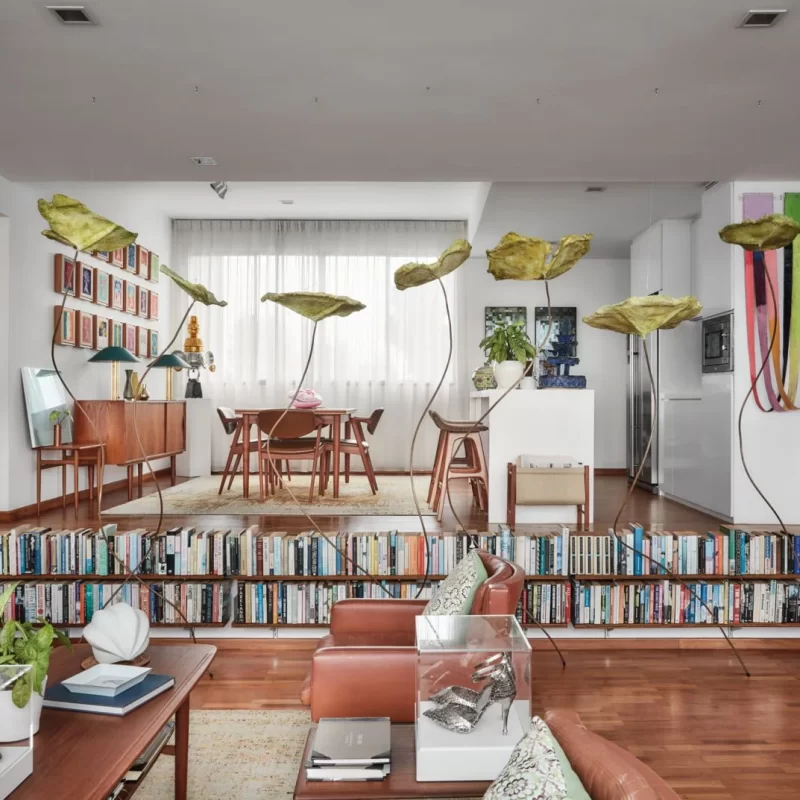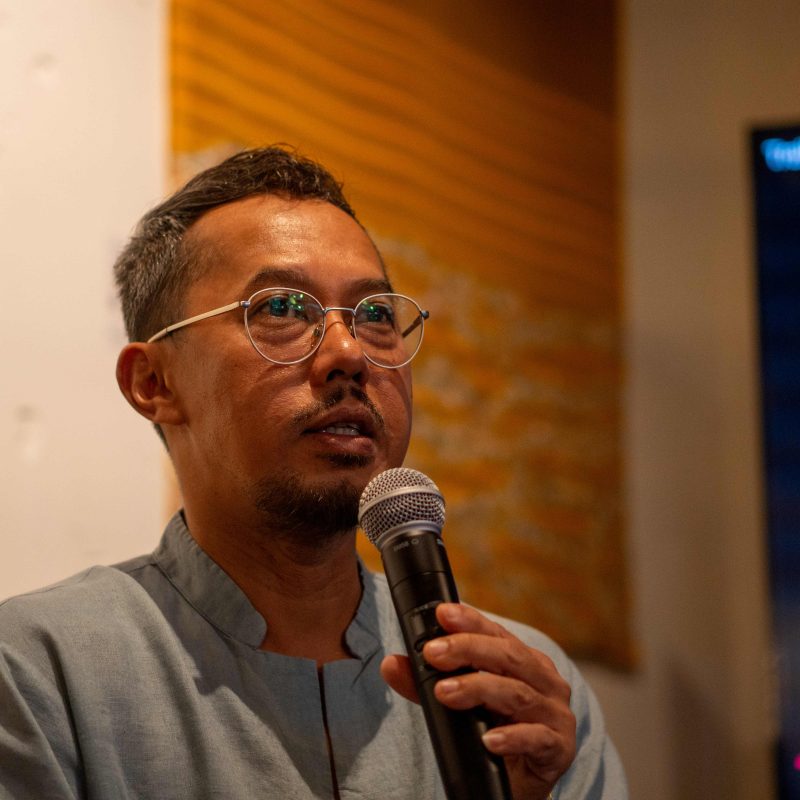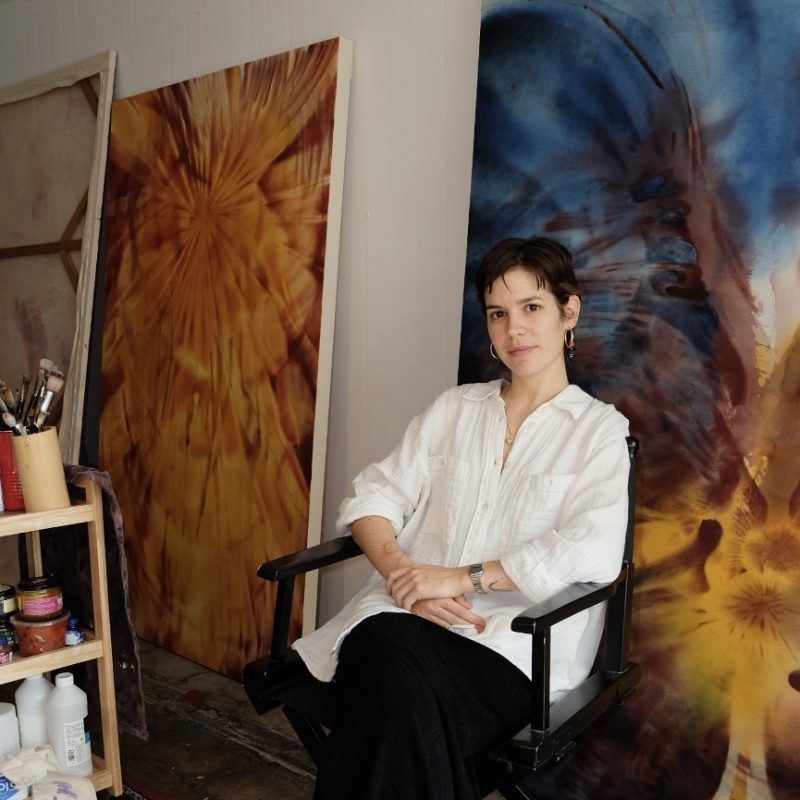Last autumn, Metis Art supported Nani Wijaya at TERRA in Beaune, Burgundy where her pieces were hung in historic chateaus. This January in Singapore, we are presenting her debut solo exhibition Enter Eden: Nani Wijaya in collaboration with Jamie QQ Wu on the occasion of Art SG and Singapore Art Week.
As a newcomer to the international art scene and a self-taught painter from Surabaya, Indonesia, Nani’s work provides a glimpse into the vivid imaginings of a woman who has yearned for the “so much More”. Today, Wijaya is based in Ubud, Bali in a semi-open home studio where her canvases are often exposed to the elements, causing a beautiful weathering that accentuates a viscerality already channeled through gestural brushwork and layers of limestone paste, charcoal and natural pigments. Hers is an emotive universe that evokes childhood memories, the contorting body from birth to death, and the shadows beyond human experience.
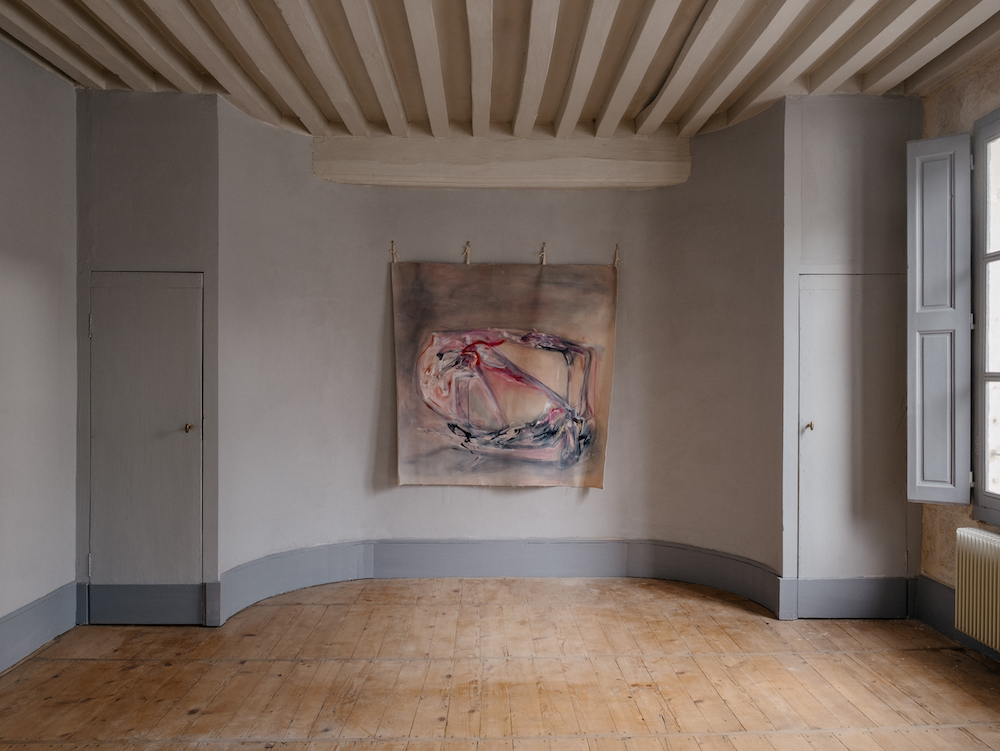
69 soap opera (2024) at 67 Pall Mall as part of TERRA, Beaune, Burgundy, 2024. Photo: James Retief.
Your recent works selected for both TERRA and Enter Eden use natural pigments and limestone paste. What is the significance of these materials?
Our body is the first object we can see and feel. The body itself has a certain colour, and the closest colour for that “meat” is red, earthy, iron oxide. To give a sense of the body’s bones and their hardness, I chose limestone paste. Indigo dye is a special colour. I looked for this indigo because it could replace the blackness of Chinese ink, though not entirely. It blends well with other colours without making the painting look so deadly serious. It’s soft, but it still has a strong punch.
Tell us more about the paintings you have presented at TERRA.
Those are my explorations on what the human body can do in my imagined world. When we talk about the body as an object, I imagine how to place it in space, connecting it to a certain place even though that place can feel unreal.
In Nike won’t fall (2022), I painted the human body coalescing with another body. I often play with the horizontal and vertical space of canvas since I work on the floor and move my body around it. Similarly, 69 soap opera (2024) captures two figures that are rolling onto each other like a never ending television drama. It’s about our addiction to the pleasurable life, dopamine and media.

Sirih02 (2019) at La Maison De Pommard as part of TERRA, Beaune, Burgundy, 2024. Photo: James Retief.
There was also a work on paper which was inspired by Giorgio Morandi’s still life. It was placed on a console amongst other vases in the room.
In Sirih02 (2019), I rendered leaves that look like still life while also capturing left-to-right movement. There’s a grey, radiant behaviour to the leaves, leaving traces and memories in that soft swinging gesture. I studied Morandi in the way he placed objects and gave them identity. His muted colours give a chilled ambience to something isolated, while still trying to articulate its objecthood. In a sense, Daun Sirih was already a “dead body” that needed to be given life once more on a sheet of paper.
In terms of those traces – what does “capturing memory” mean to you?
Capturing memory is to grasp as quickly as possible what is going on inside my mind, and allowing it to settle down for a couple days through making some sketches. The thoughts that stay and give me an itching feeling, on and on. And I cannot get rid of them… In the blink of an eye, it could be triggered by anything that’s surrounding me in my daily life, memories and flashes of my early childhood, books I’m reading, interactions with other people, or subconscious longings.
Your work often reflects on memory and impermanence. Do you see painting as a way to hold onto these fleeting moments?
Ideally, I want to have full awareness of one’s life in every single second. The human body has limits, but our mind does not. Painting can be channeling that Mind, exploring and nurturing our souls. When I realise that I really could die at any moment, it seems cliche, but yes, death is real. I want to understand, to connect within myself and with my own body while I am still alive, the fragility of human beings and how we encounter life and breath on a daily basis.
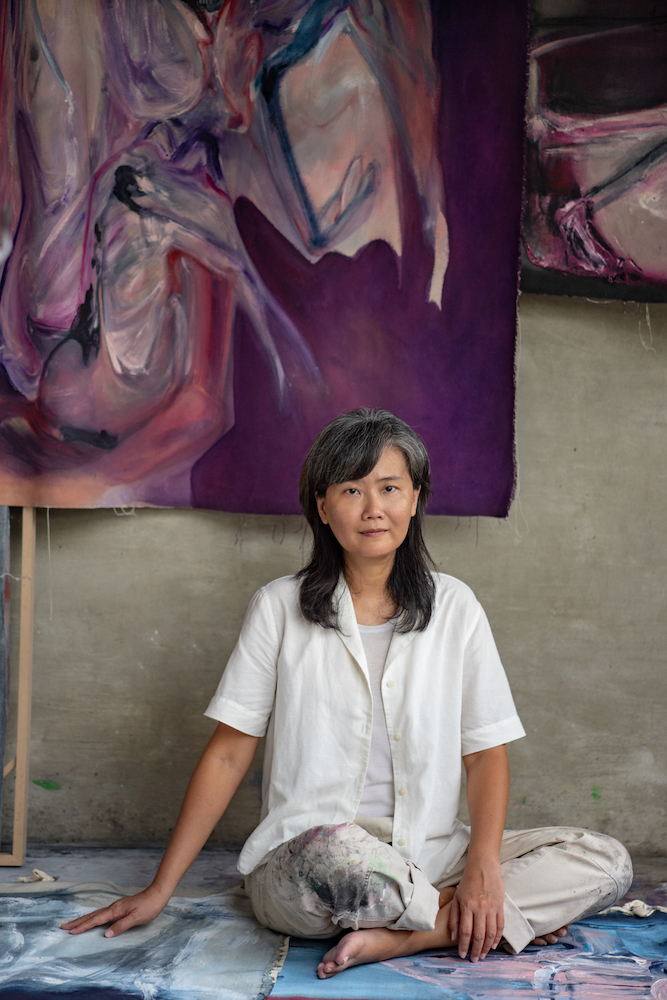
Nani Wijaya in her studio in Ubud, Bali.
Sometimes your figures seem like walking or distorted shadows from the past.
In terms of visual sight, I often notice shadows that fall on the wall, they move slightly by the wind, changing their shape constantly, depending on how the light is playing on them. But figuratively, when you are speaking or thinking of something, it is already happening in the past. That shadow is occurring because of our time-bound existence. I am trying to capture that feeling, and that’s when everything slows down. I do not want to rush when it comes to how I choose to battle on canvas. To create shadows, I first have to become aware of my being, thoughts, emotions, and my very existence. My tools are everything I’ve learned and experienced, being enlightened by knowledge.
But shadows can be excessive too – they leave both residue and lightness at the same time. Shadows come in many ways, through the longing of something that I could not do, or things that happened to me in the past, when I’m questioning what is really going on. I am interested in how the Japanese value shadows in their life. The writer Jun’ichirō Tanizaki in his essay, In Praise of Shadows, made sense of the shadow in every aspect of human life. To embrace the shadow…
Are there particular artists you’re drawing from as inspiration right now?
I like Francis Bacon. He was a person that changed my perspective in his forceful emotion. Anything can happen in his paintings. Caravaggio has a bold sense in playing with the depth of darkness and majesty of light. Egon Schiele and Vincent Van Gogh are delicious to me in seeing their lines, exaggerated shapes and texture.






